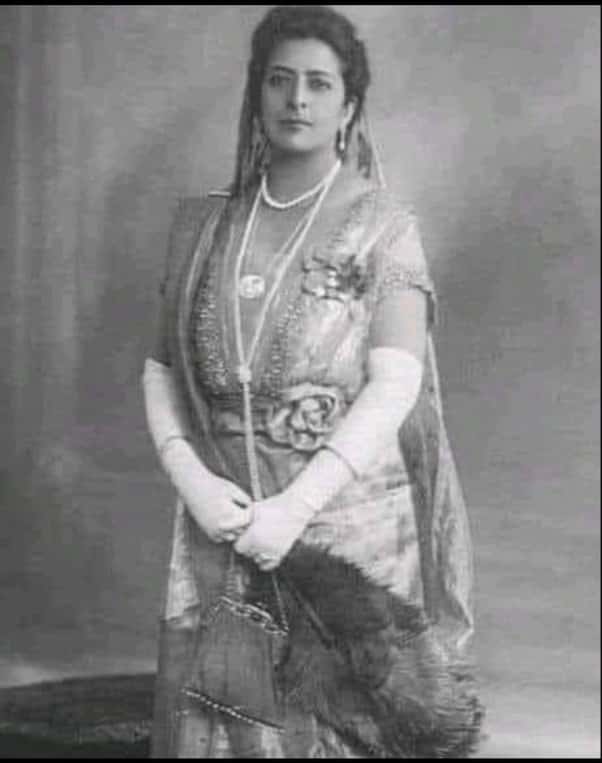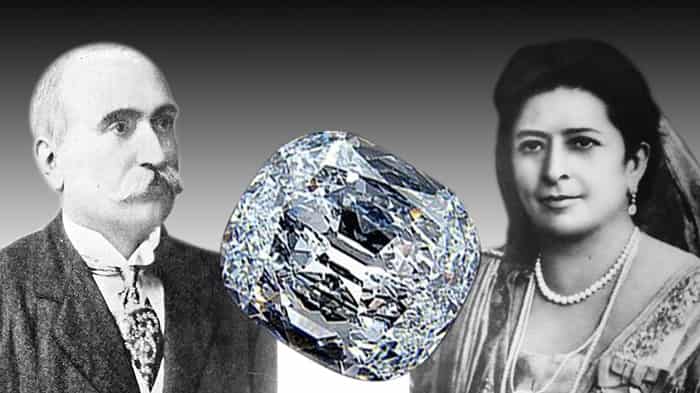The Meherbai Tata Diamond Story: A Legacy of Compassion and Courage

The Tata family is synonymous with vision, leadership, and philanthropy in India. Among the many remarkable individuals in the Tata lineage, Meherbai Tata stands out for her courage, empathy, and devotion to the welfare of the Tata employees.
One of the most compelling stories about her concerns the mortgaging of her priceless Jubilee Diamond, a historic gesture that not only saved the Tata Company during a financial crisis but also symbolized her deep sense of responsibility and commitment to the workforce.
Who Was Meherbai Tata?
Meherbai Tata, born in 1879, was the wife of Sir Dorabji Tata, the elder son of the pioneering industrialist Jamsetji Tata. Dorabji Tata was the chairman of Tata Sons and played a pivotal role in expanding the Tata Group’s footprint across various sectors, including steel, power, and chemicals. Meherbai, who was of Parsi heritage, was well-known for her refined personality, intelligence, and philanthropy.
A woman of noble character, Meherbai was not just a companion to her husband but a visionary in her own right. Her contribution to Indian society, particularly in terms of healthcare and women’s empowerment, is well-acknowledged. She championed women’s rights and encouraged the education and independence of Indian women during a time when societal norms were heavily restrictive.
The Story of the Jubilee Diamond
The Jubilee Diamond was one of the largest diamonds in the world at the time, weighing a staggering 245.35 carats in its rough form and later polished into a 245.16-carat gem. It was discovered in South Africa in 1895 and was named the Jubilee Diamond in honor of Queen Victoria’s Diamond Jubilee in 1897. Dorabji Tata purchased this extraordinary diamond for his wife Meherbai in 1900, as a token of his love and admiration for her. For many years, the Jubilee Diamond was a symbol of their deep bond and Meherbai’s grace.
However, the diamond would later play a critical role in safeguarding the future of Tata Sons and its employees.
A Crisis Strikes: The Financial Struggles of Tata Sons
In the early 1920s, the Tata Group faced a severe financial crisis. The world was still reeling from the economic aftershocks of World War I, and the Tata Iron and Steel Company (TISCO), now known as Tata Steel, was particularly hard-hit. At that time, Tata Steel was India’s largest industrial enterprise, employing thousands of workers. However, the company was struggling to meet its financial obligations, including the payment of employee salaries.
Sir Dorabji Tata, as chairman, was determined to keep the company afloat and ensure that his employees continued to receive their salaries, but he found himself at a critical juncture. The company’s reserves were exhausted, and there were no immediate sources of funds to keep operations running.
Meherbai’s Unwavering Support: Mortgaging the Jubilee Diamond
In a remarkable act of sacrifice and empathy, Meherbai Tata came forward with a solution that has since become a legendary example of selflessness. Recognizing the dire financial situation, she mortgaged her precious Jubilee Diamond at the Imperial Bank. The year was 1924, and this decision was driven by Meherbai’s deep commitment to the Tata workforce, as well as her loyalty to her husband’s vision.
By mortgaging the Jubilee Diamond, Meherbai helped the Tata Group secure much-needed funds to continue operations, ensuring that the employees of Tata Sons received their regular salaries. This courageous move enabled the company to weather the storm and laid the foundation for its eventual recovery.
Legacy of the Jubilee Diamond and Meherbai’s Sacrifice
While the Jubilee Diamond was eventually sold, Meherbai Tata’s legacy endures as a symbol of sacrifice for the greater good. Her actions reinforced the Tata family’s deep sense of responsibility towards their employees and the broader Indian society. The Tata Group’s philosophy of putting people before profits, which continues to this day, can be traced back to such pivotal moments in its history.
Although Meherbai passed away in 1931 after a prolonged battle with cancer, her memory and her extraordinary contributions to the Tata family and India remain deeply cherished.
A Timeless Legacy
Meherbai Tata’s decision to mortgage her Jubilee Diamond is more than just a story of financial resilience; it is a testament to her compassion, foresight, and unwavering belief in the welfare of the people around her. Her sacrifice, along with Sir Dorabji Tata’s leadership, helped steer the Tata Group through one of its toughest periods, allowing it to grow into the global conglomerate it is today.
This inspiring story of Meherbai Tata showcases the deep-rooted values of the Tata family, where personal sacrifices were made to ensure the well-being of employees and the continuity of the company. It is an invaluable chapter in India’s industrial history, reflecting the heart and humanity behind one of its most enduring business empires.
FAQ: The Meherbai Tata Diamond Story
1. Who was Meherbai Tata?
Meherbai Tata was the wife of Sir Dorabji Tata, the elder son of industrialist Jamsetji Tata. She was known for her philanthropy, support for women’s rights, and her pivotal role in saving the Tata Group during a financial crisis by mortgaging her priceless Jubilee Diamond.
2. What is the Jubilee Diamond?
The Jubilee Diamond is a famous gem discovered in South Africa in 1895. Weighing 245.35 carats in its rough form, it was later polished to 245.16 carats. The diamond was purchased by Sir Dorabji Tata for Meherbai in 1900 and became a symbol of their bond.
3. Why did Meherbai Tata mortgage her Jubilee Diamond?
In 1924, the Tata Group, specifically Tata Steel, faced a severe financial crisis, struggling to pay employee salaries. To secure funds and keep the company running, Meherbai Tata mortgaged her Jubilee Diamond to the Imperial Bank, ensuring the company’s continuity and that employees received their salaries.
4. What impact did Meherbai Tata’s sacrifice have on the Tata Group?
Meherbai’s decision to mortgage the Jubilee Diamond provided the Tata Group with the funds needed to survive a critical financial crisis. This act of sacrifice helped preserve thousands of jobs and demonstrated the Tata family’s deep sense of responsibility toward its employees.
5. When did Meherbai Tata mortgage the Jubilee Diamond?
Meherbai Tata mortgaged the Jubilee Diamond in 1924 during the financial struggles faced by Tata Steel (then Tata Iron and Steel Company) after World War I.
6. What happened to the Jubilee Diamond?
The Jubilee Diamond was eventually sold to provide more long-term financial stability to the Tata Group. While the diamond itself no longer belongs to the Tata family, its symbolic legacy lives on in the company’s history.
7. How did Meherbai contribute to society beyond the Jubilee Diamond story?
Meherbai Tata was a champion of women’s rights and healthcare. She was involved in various philanthropic activities, advocating for the education and empowerment of Indian women. Her contributions had a lasting impact on social welfare initiatives in India.
8. What was the role of Sir Dorabji Tata in this crisis?
Sir Dorabji Tata was the chairman of Tata Sons during the financial crisis. He was committed to ensuring that the company remained operational and that employees were paid. Meherbai’s decision to mortgage the Jubilee Diamond supported his efforts and enabled the company to navigate through the difficult period.
9. What is the legacy of Meherbai Tata’s sacrifice?
Meherbai Tata’s decision to mortgage the Jubilee Diamond is remembered as a remarkable act of selflessness. Her sacrifice exemplifies the Tata family’s commitment to prioritizing employee welfare over personal wealth, a value that continues to be a cornerstone of the Tata Group’s business philosophy.
10. How is Meherbai Tata remembered today?
Meherbai Tata is remembered as a compassionate and courageous woman whose selflessness played a crucial role in saving the Tata Group during a financial crisis. Her legacy is honored not only within the Tata family but also in Indian business history as a symbol of integrity, empathy, and responsibility.

